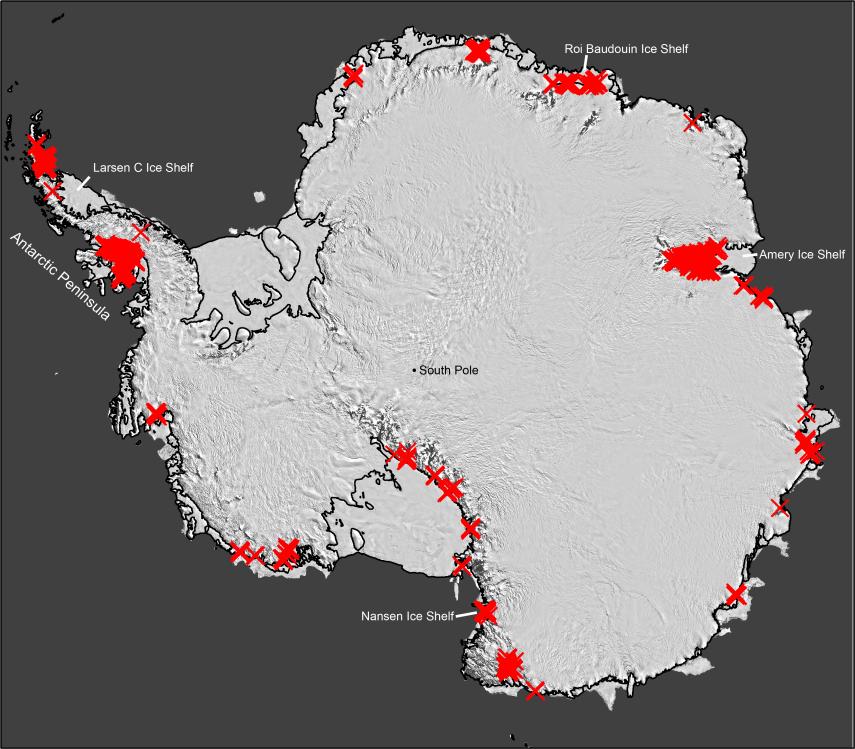SOURCE: Columbia University Earth Institute
DATE: April 19, 2017
SNIP: In the first such continent-wide survey, scientists have found extensive drainages of meltwater flowing over parts of Antarctica’s ice during the brief summer. Researchers already knew such features existed, but assumed they were confined mainly to Antarctica’s fastest-warming, most northerly reaches. Many of the newly mapped drainages are not new, but the fact they exist at all is significant; they appear to proliferate with small upswings in temperature, so warming projected for this century could quickly magnify their influence on sea level. An accompanying study looks at how such systems might influence the great ice shelves ringing the continent, which some researchers fear could collapse, bringing catastrophic sea-level rises.
“This is not in the future—this is widespread now, and has been for decades,” said lead author Jonathan Kingslake, a glaciologist at Columbia University’s Lamont-Doherty Earth Observatory. “I think most polar scientists have considered water moving across the surface of Antarctica to be extremely rare. But we found a lot of it, over very large areas.”
Many of the newly mapped drainages start near mountains poking through glaciers, or in areas where powerful winds have scoured snow off underlying bluish ice. These features are darker than the mostly snow-covered ice sheet, and so absorb more solar energy. This causes melting, and on a slope, liquid water then melts a path downhill through overlying snow. If the continent warms this century as projected, this process will occur on a much larger scale, say the authors. “This study tells us there’s already a lot more melting going on than we thought,” said coauthor Robin Bell, a Lamont-Doherty polar scientist. “When you turn up the temperature, it’s only going to increase.”

Scientists have discovered that seasonally flowing streams fringe much of Antarctica’s ice. Each red ‘X’ represents a separate drainage. Up to now, such features were thought to exist mainly on the far northerly Antarctic Peninsula (upper left). Their widespread presence signals that the ice may be more vulnerable to melting than previously thought. (Adapted from Kingslake et al., Nature 2017)
